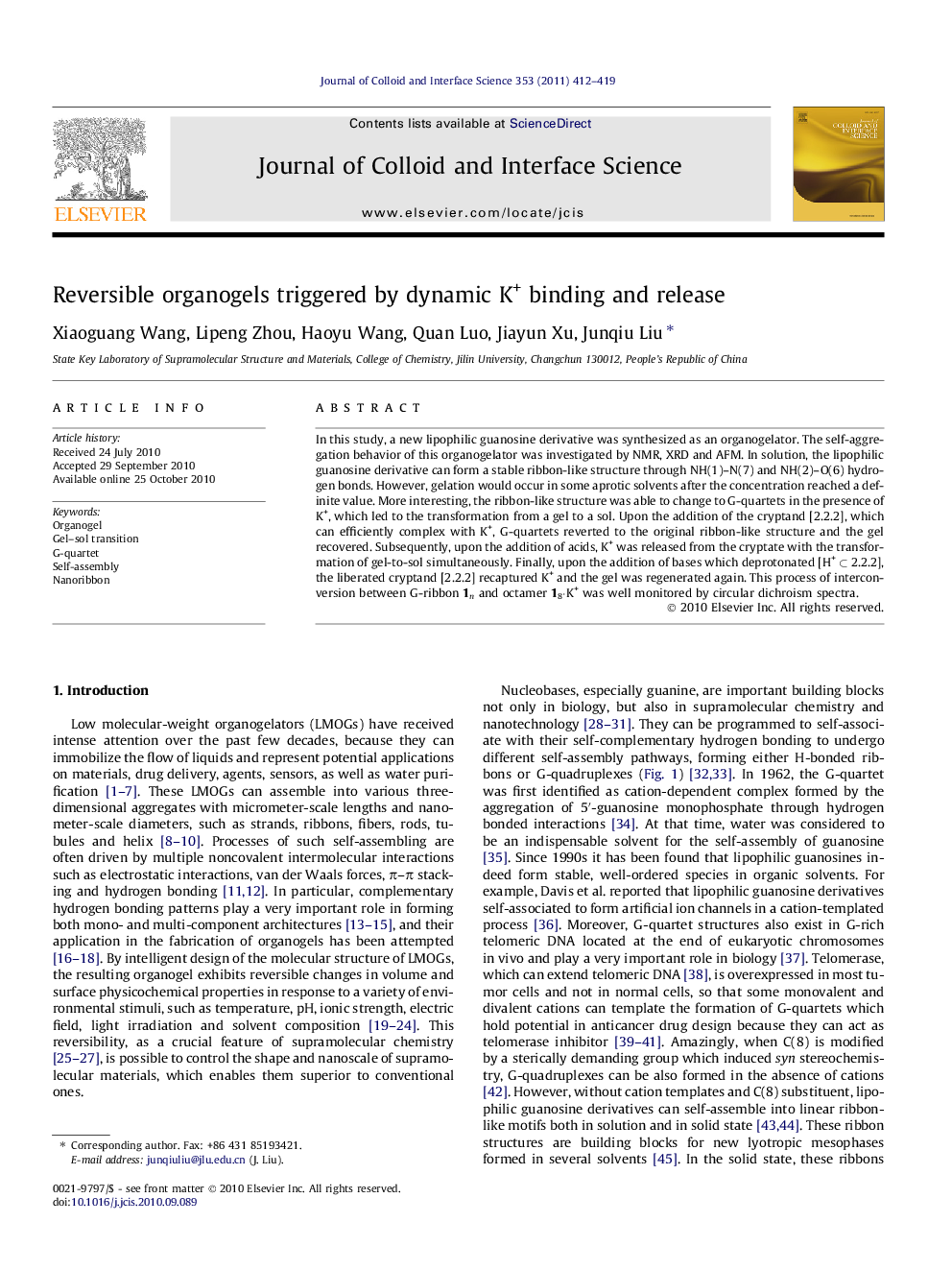| Article ID | Journal | Published Year | Pages | File Type |
|---|---|---|---|---|
| 609173 | Journal of Colloid and Interface Science | 2011 | 8 Pages |
In this study, a new lipophilic guanosine derivative was synthesized as an organogelator. The self-aggregation behavior of this organogelator was investigated by NMR, XRD and AFM. In solution, the lipophilic guanosine derivative can form a stable ribbon-like structure through NH(1)–N(7) and NH(2)–O(6) hydrogen bonds. However, gelation would occur in some aprotic solvents after the concentration reached a definite value. More interesting, the ribbon-like structure was able to change to G-quartets in the presence of K+, which led to the transformation from a gel to a sol. Upon the addition of the cryptand [2.2.2], which can efficiently complex with K+, G-quartets reverted to the original ribbon-like structure and the gel recovered. Subsequently, upon the addition of acids, K+ was released from the cryptate with the transformation of gel-to-sol simultaneously. Finally, upon the addition of bases which deprotonated [H+ ⊂ 2.2.2], the liberated cryptand [2.2.2] recaptured K+ and the gel was regenerated again. This process of interconversion between G-ribbon 1n and octamer 18·K+ was well monitored by circular dichroism spectra.
Graphical abstractThe reversible conversion between gels and sols triggered by K+ binding and release.Figure optionsDownload full-size imageDownload high-quality image (56 K)Download as PowerPoint slideResearch highlights► A new lipophilic guanosine derivative was synthesized as an organogelator. ► In solution, the lipophilic guanosine derivative can form only one kind of stable ribbon-like structure through NH(1)–O(6) and NH(2)–N(7) hydrogen bonds. ► The resulting organogel can extract K+ from water into organic solvents. ► The resulting organogel can be reversibly interconverted between gel and sol states via sequential binding and release of K+.
